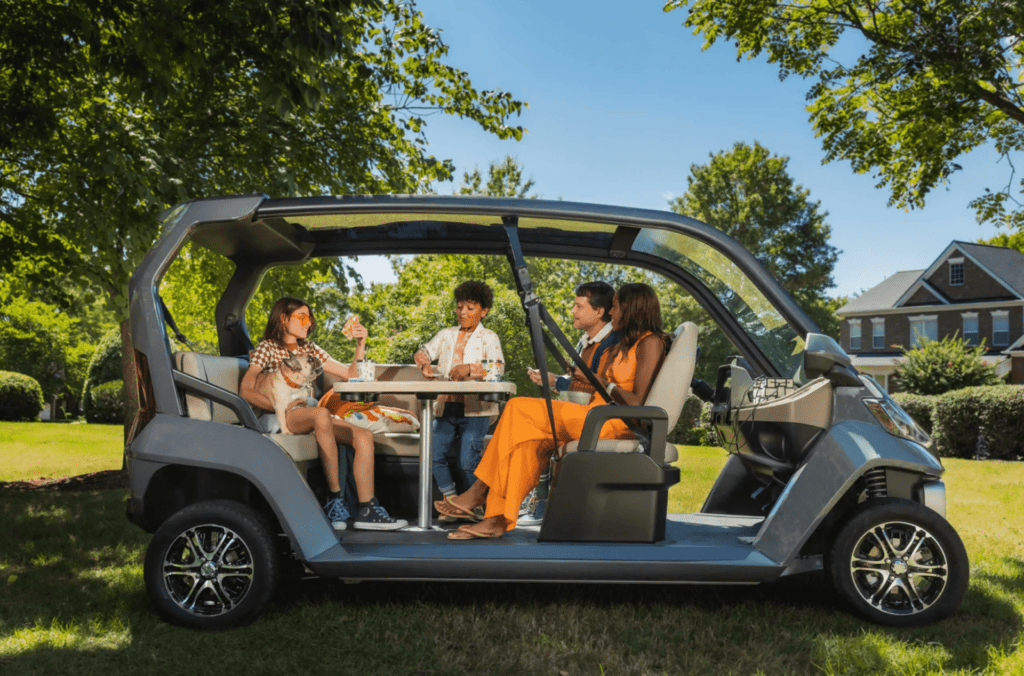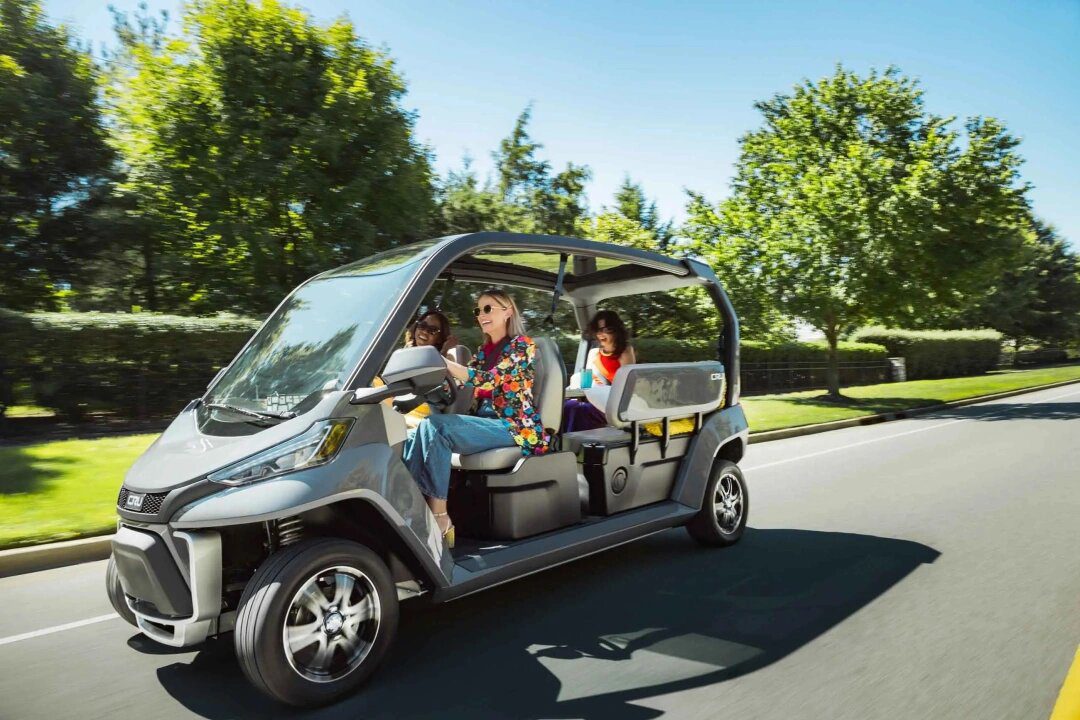The golf cart could be one of the most effective ways to combat emissions from driving. Reports have found that many car owners drive under three miles to get places. This short-distance travel is a leading cause of emissions. Club Car and BMW developed a viable solution — a new-look electric model.
Working with BMW’s Designworks, Club Car has unveiled prototypes of the Cru, a multi-seat cart-style electric vehicle (EV). It’s street-legal and has a top speed of 25 miles per hour. You can drive the Cru on any roadway with a 35-mile-per-hour speed limit.
It’s perfect for getting around the neighborhood or down to the store without producing emissions. It has a starting price of $27,000 and could cause some serious disruption in the EV market.

Photo Courtesy BMW Designworks
Club Car calls this cart the Neighborhood Electric Vehicle (NEV). It’s the perfect name as it functions like a car yet is only designed to travel a few miles. The NEV has some unique features.
For starters, it can seat up to six people, so you could drive the kids to and from baseball practice or pick up your neighbors on the way to the cul-de-sac barbecue. There’s a deployable table put under the rear seats. That’s great for enjoying snacks or a quick Uno game. If you’ve noticed hints of amusement sprinkled into the NEV concept, you’ve caught onto exactly Club Car’s goal.
“The vehicle layout and design makes the vehicle as much a part of the destination as the place you’re going to, and it’s something you can use at the destination as part of your experience,” said Ross Atherton, vice president and general manager of Club Car.
The Cru can be fully charged in six to 14 hours using a 110-volt or 120-volt outlet and the supplied charger — depending on battery discharge.
And don’t expect to go incredibly far. The range is about 15 to 20 miles before the next charge. You couldn’t take this vehicle on a longer trip, but that’s not its purpose. It’s not for road trips, but going to the store? Now we’re talking!

Photo Courtesy BMW Designworks
The Cru cart falls in the realm of micromobility, one of the viable solutions for combatting traffic and air pollution. A 2019 study by INRIX collected micromobility capabilities in 25 cities nationwide. The findings found that it was more cost-effective than personal vehicle ownership and reduced emission rates substantially.
While the study analyzed data from share bike services and e-scooters, similar logic can be applied to golf carts. They are more carbon-friendly with their electric motors and compact enough to get through most urban streets.
Warm-weather cities tend to have better micromobility capacity. Honolulu, HI, earned the top spot in the INRIX study.
Meanwhile, auto-centric cities like Dallas had some of the lowest micromobility capabilities.
While it’s unlikely electric carts will be widely available for rent in many of America’s biggest cities, some communities are already taking advantage of them. They are popular among retirement communities as senior citizens can get around much easier in the EVs. They are also less bulky than cars and eliminate many dilemmas of car ownership.
Golf carts have a lot of potential to upend automobiles as a preferred transportation method. As the EV movement continues, there’s been an incline in popularity and ownership. However, electric cars can be expensive, and their prices only seem to be increasing. Consumers are seeking more affordable and efficient transportation methods, and the Cru may be an example of a fun option.





